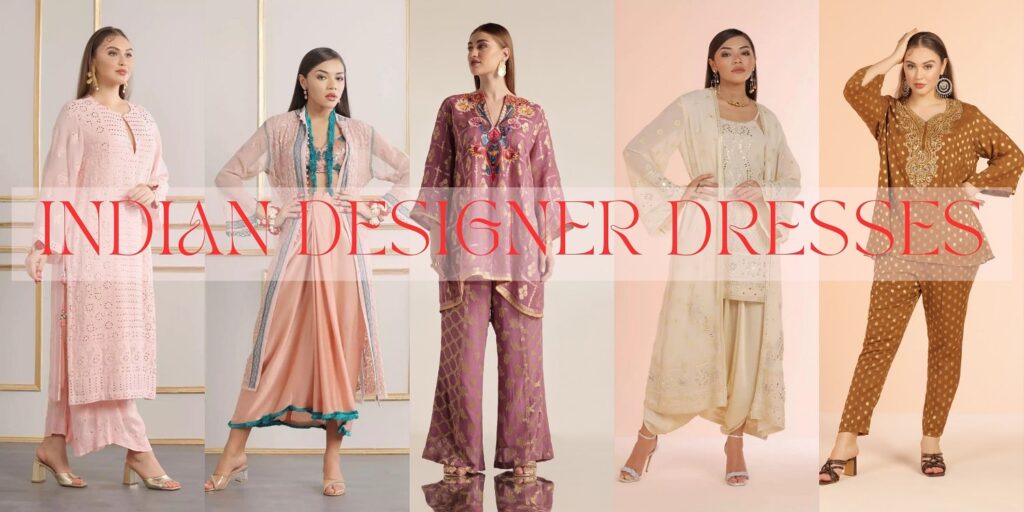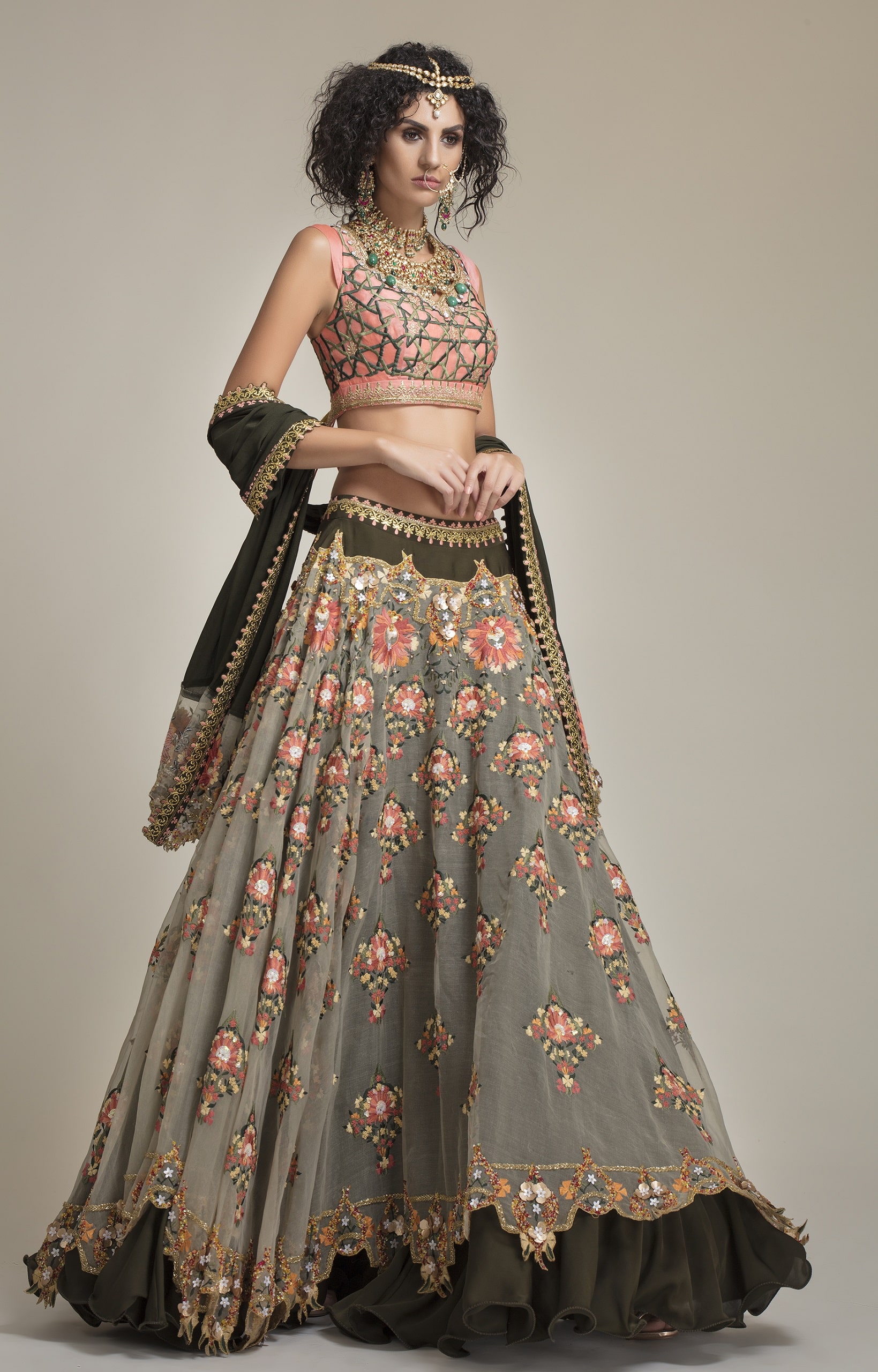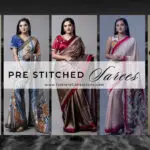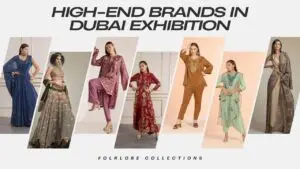Indian outfits have their charm and level of sophistication to the whole evening. Whether we are talking about marriage, reception, engagement, or sangeet, all these events become vibrant and colorful when we see all the guests wearing different Indian outfits. Imagine how these attires would look when combined with the Indian designer’s touch, and that evening will be narrating a different story altogether. Designers create these outfits using inspirations like traditional work, nature, flowers, or even carvings on old heritage buildings. So, if a bride is wearing a designer’s bridal Indian lehenga on her wedding day, she is telling her story along with the designer’s inspiration. From different choices and blends of colors to artworks of narrations of multiple generations, designers create a unique and captivating aesthetic. Let’s dig deep and understand the essence of Indian designer dresses and understand how these extraordinary, charming dresses are made.
Mastery of Craftsmanship
When designing Indian outfits, the first thing that attracts anyone is the color of the garment, but the next thing we look at is the artwork, the embroidery, sequence work, or anything else. When designers design these designs, they ensure they have the best artisans to create such intricate designs for their garments, especially in ethnic Western dresses. Contemporary saree designs often feature unconventional fabrics like georgette, crepe, and organza, providing a modern twist to this classic attire. The pallu, or the loose end of the saree, is often the focal point for creative expression, adorned with intricate embroidery, sequins, or mirror work. The mastery of craftsmanship is evident in the precision of handwoven silk and the delicate detailing that elevates the saree from a garment to a work of art.
Vibrant Colors and Fabrics
The choices of fabric and colors make the whole garment stand out differently. Designers study and understand how each color and material work together and how it will give a complete look to the garment; for example, the red color on raw silk will stand out like a royal red, and chiffon sunny yellow will be a timeless piece, as we see in the Bollywood movies and so forth. While working on the Indo-western dresses for the wedding reception, the designer has to work around the material and see what sort of work it can hold and what colors would make it look royal and vibrant and stand out from the crowd. Imagine a newlywed bride wearing a gown adorned with intricate embroidery and mirror work from the generation of Lucknow Nawabs on raw silk material with royal blue color. Won’t she be the most beautiful bride on the stage?
Timeless and Adaptability
The Indian ethnic wear that we have been seeing for generations. Right from different kingdoms’ periods, the artwork, print, patterns, and other styles from different regions of India have been adorned throughout. The Patolas and the Ghadcholas are from Gujarat, the Bandhani from Rajasthan, the mirror work from Gujarat, the Aari work from Kashmir, thread Chikankari work from Lucknow, Banarasi silk thread work, or Kanchipuram Silk from South India, these traditional from each region have been part of our functions wear still. So, if the designer creates a unique blend of these classic patterns with Indo-western attires, it becomes even more timeless and adaptive to recent and future trends.
For example, the traditional Lucknowi work with some mirror work on new and trendy cord sets with different pastel shades or hues of yellow on a dhoti saree with Rajasthani Bandhage or Bandhani styles will make your Haldi event even more colorful and vibrant in the day!
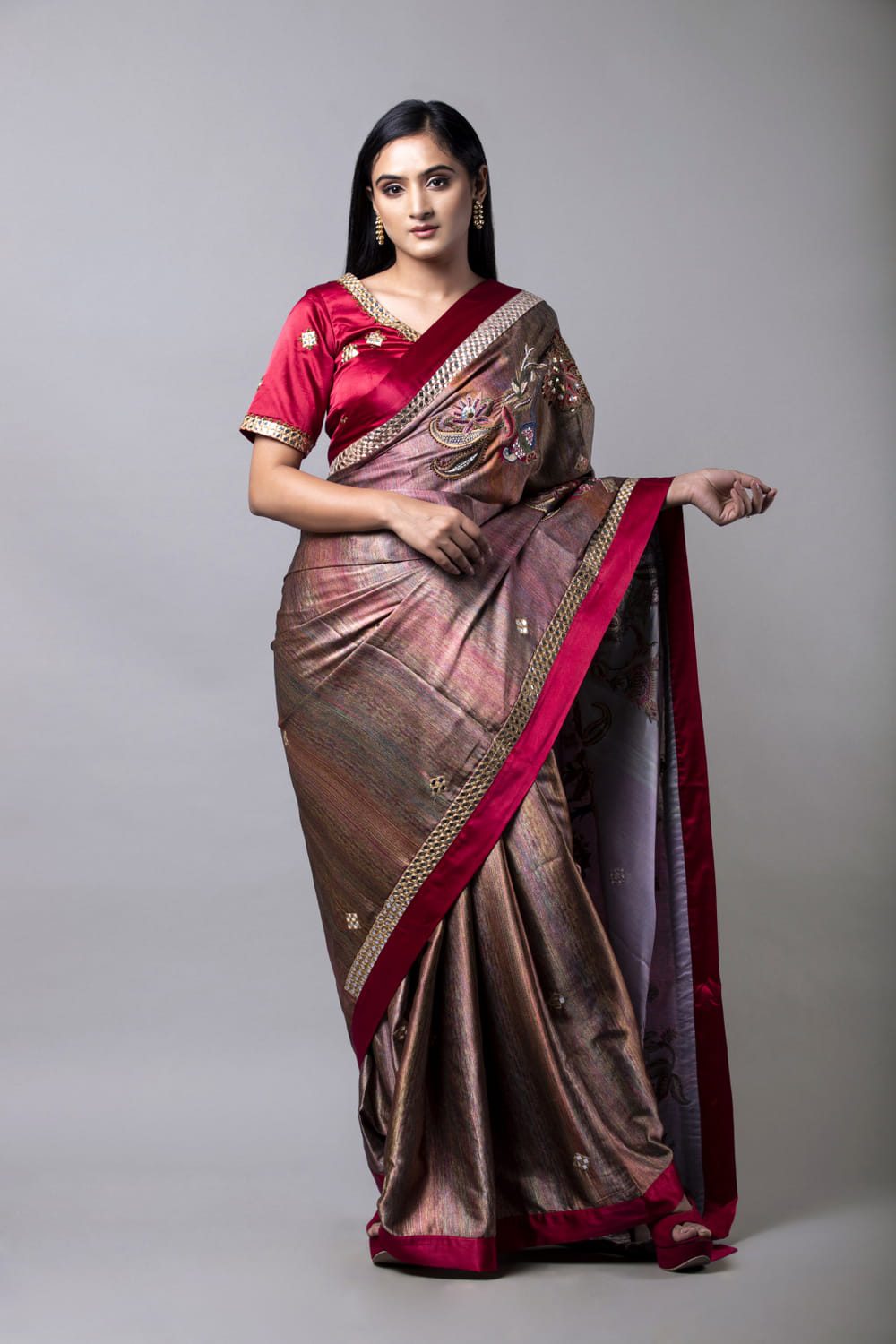
Sustainable Practices in Indian Fashion
In recent years, there has been a growing awareness of sustainable and ethical fashion practices in the global fashion industry. Indian designers are not far behind in embracing this shift. Many designers are incorporating eco-friendly fabrics, adopting ethical production processes, and promoting slow fashion. Handloom weaves, such as khadi and organic cotton, are gaining prominence in Indian designer dresses, promoting the rich heritage of Indian handcrafts while supporting local artisans. Designers are also exploring upcycling and recycling techniques, giving new life to vintage textiles and reducing the environmental impact of fashion. The mastery of craftsmanship in sustainable practices lies in the thoughtful selection of materials, the implementation of ethical production methods, and the commitment to creating fashion that is not only beautiful but also environmentally conscious.
The Impact of Bollywood and Celebrity Endorsement
The influence of Bollywood on Indian fashion cannot be overstated. Celebrities, often considered style icons, are crucial in shaping fashion trends. Indian designer dresses worn by Bollywood celebrities on and off-screen become instant sensations, influencing the choices of fashion enthusiasts across the country.
Designers collaborate with celebrities to create bespoke outfits for red-carpet events, weddings, and film promotions, amplifying the reach and impact of their creations. The fusion of traditional craftsmanship with contemporary designs, as seen in celebrity-endorsed Indian designer dresses, reflects the dynamic nature of the fashion industry. The mastery of craftsmanship extends to the ability to create creations that capture the attention of a global audience while staying true to India’s rich cultural heritage.
Final Thought
As we move forward, the future of Indian designer dresses promises a continued celebration of tradition and innovation. The industry is witnessing a surge in young and dynamic designers who are redefining Indian fashion with their fresh perspectives. The global recognition of Indian craftsmanship and the increasing demand for sustainable and ethical fashion are driving forces that will shape the evolution of Indian designer dresses. Whether it is the Bridal Indian lehenga we are talking about, which is already narrating its own story with all the details and patterns the designer has created on their muse, or the ethnic Indian western dresses that they created with the classical patterns that the bride and her bridesmaids wear on the cocktails or receptions make the entire evening even more vibrant.
From the rich colors of festivals to the intricate embroideries that tell stories of craftsmanship, these dresses reflect India’s cultural richness and diversity. As the fashion industry continues to evolve, Indian designers will play a pivotal role in shaping the narrative, creating garments that not only adorn the body but also carry the soul of a nation.


